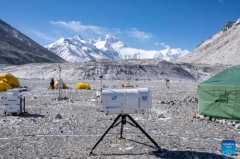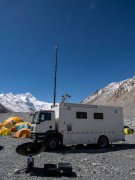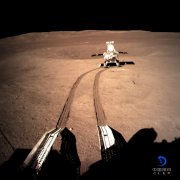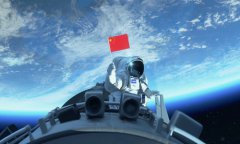Home>>
China's Chang'e-5 mission offers new insights into evolution of Moon(Xinhua) 08:16, October 20, 2021
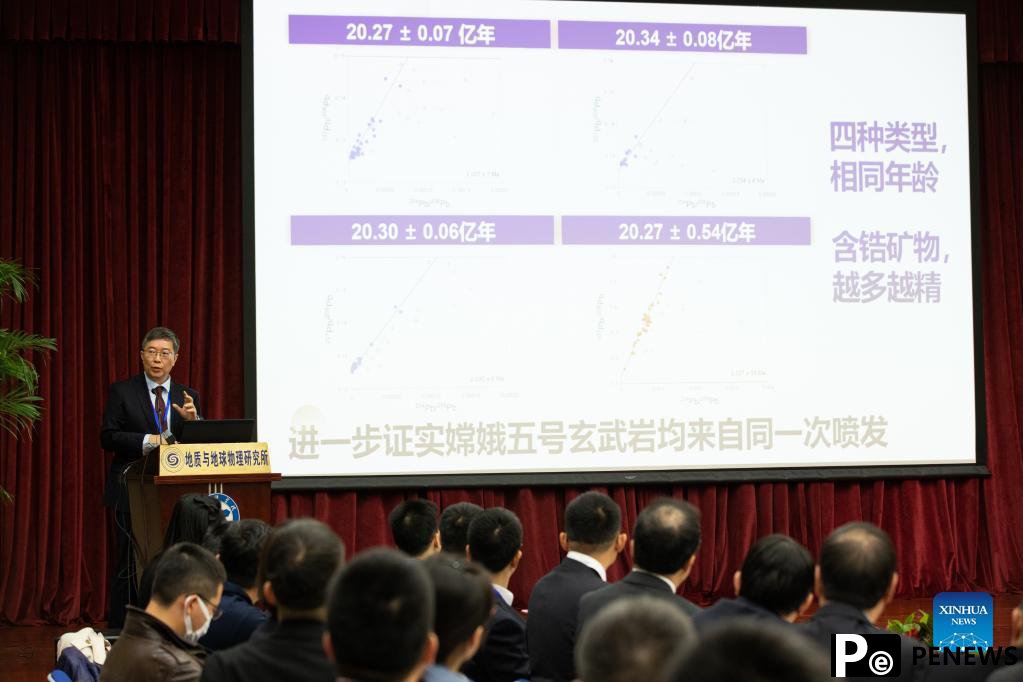
Li Xianhua, an academician with Chinese Academy of Sciences (CAS) who led the research team, introduces an analysis of moon rocks brought back to Earth by China's Chang'e-5 mission during a press conference held at Institute of Geology and Geophysics of the Chinese Academy of Sciences in Beijing, capital of China, Oct. 19, 2021. Chinese researchers have studied the lunar samples brought back by the Chang'e-5 mission and dated the youngest rock on the Moon at around 2 billion years in age, extending the "life" of lunar volcanism 800-900 million years longer than previously known. The study, conducted mainly by a research team at the Institute of Geology and Geophysics (IGG), Chinese Academy of Sciences (CAS), was presented in three Nature papers and published online Tuesday. (Xinhua/Jin Liwang)
BEIJING, Oct. 19 (Xinhua) -- Chinese researchers have studied the lunar samples brought back by the Chang'e-5 mission and dated the youngest rock on the Moon at around 2 billion years in age, extending the "life" of lunar volcanism 800-900 million years longer than previously known.
The study, conducted mainly by a research team at the Institute of Geology and Geophysics (IGG), Chinese Academy of Sciences (CAS), was presented in three Nature papers and published online Tuesday.
Last year, China's Chang'e-5 mission retrieved samples from the Moon weighing about 1,731 grams, which were the first lunar samples in the world in over 40 years.
"The Chang'e-5 mission was a success and the lunar samples brought back shed new light on the evolution of the Moon," said Li Xianhua, an academician with CAS who led the research team.
DATING MOON ROCKS
"The magma of the Moon has solidified, and the Moon's geologic activity has already ceased. When the Moon's volcanic activity stopped, it emerged as one of the major issues in its evolutionary history," said Li Qiuli, head of the secondary ion mass spectrometry laboratory of IGG.
The youngest dated rock from the Apollo and Luna missions and lunar meteorites was around 2.8-2.9 billion years old. However, more samples are needed and one of the Chang'e-5 tasks is to explore the youngest magmatic activity of the Moon.
"The dimply surface we see when we look up at the Moon through a telescope is due to the fact that many asteroids have collided with it over billions of years. Older rocky regions have experienced more impact craters over time, and regions with younger rocks have fewer craters," said Li Qiuli.
Using the method of chronology known as crater counting, researchers inferred that the Oceanus Procellarum, the landing site of the Chang'e-5 mission, was most likely to have been witness to one of the Moon's last volcanic eruptions. Researchers could then calibrate the results from crater counting with radioisotopically dated samples.
Radioisotopic dating works on the principle that radioactive elements have constant decay rates. By measuring the relative abundances of the parent and daughter isotopes, researchers will know how long the decay has been taking place.
Using the microscope, researchers manually picked out rock fragments from their 3-gram lunar samples, which is as difficult as separating black flour from white flour by hand. Most of these minerals suitable for dating are only one-twentieth of the diameter of a hair.
Li Qiuli said that the research team had been well-prepared for studying the lunar samples retrieved by China, and has continuously developed the ion probe technology in the past decade, reaching an internationally acclaimed level of expertise.
"Our palms were sweaty as we loaded the sample and turned on the mass spectrometer. When we saw the age it spat out, we couldn't believe our luck. But we wanted to be sure," said Li Qiuli, adding that they carried out more than 200 tests.
In total, the team analyzed 47 different rock fragments extracted from the sample materials and dated the youngest rock on the Moon at 2.03 billion years old. The new age extends the life of lunar volcanism 800-900 million years longer than previously known.
OUT OF EXPECTATION
"The Moon is only around one percent the mass of Earth. At that strikingly small size, theoretically, at least, it should have completely solidified at a quick pace. Our team investigated further why volcanic activity still existed on the Moon so late," said Li Xianhua.
Lunar scientists focused on KREEP, an acronym built from the letters K (for potassium), REE (for rare-earth elements) and P (for phosphorus), which is a distinctive geochemical component of some lunar rocks.
"A widely accepted hypothesis is that radioactive elements (U, Th and K) supplied the heat necessary for the late volcanic activity. Because KREEP is rich in radiogenic elements U, Th and K, it is therefore thought to be responsible for the young volcanic activity," said Yang Wei, a researcher with IGG.
"Isotopes are an effective way to identify the KREEP component as they are like the DNA of a rock and will not change through the magmatic evolution," said Yang.
However, the difficulty lies in the small size of the basalt clasts in the Chang'e-5 lunar samples. It is hard to obtain the isotope ratios of the Chang'e-5 basalt.
"It's like DNA testing, which requires a large tube of blood, but we can only use one drop," said Yang.
